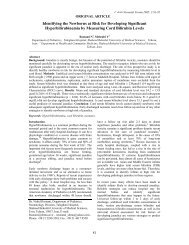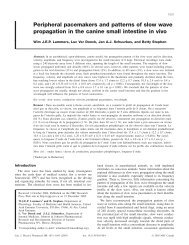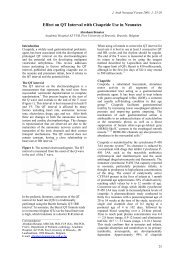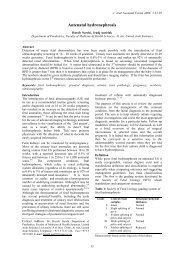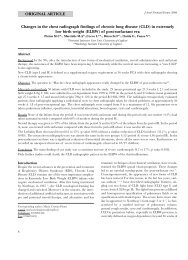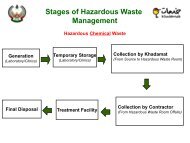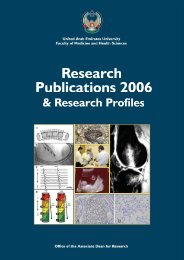Research Profile - College of Medicine and Health Science - United ...
Research Profile - College of Medicine and Health Science - United ...
Research Profile - College of Medicine and Health Science - United ...
You also want an ePaper? Increase the reach of your titles
YUMPU automatically turns print PDFs into web optimized ePapers that Google loves.
Department <strong>of</strong> Physiology<br />
The cancer laboratory<br />
The overall thrust <strong>of</strong> the pancreatic cancer<br />
program is elucidating the molecular<br />
mechanisms underlying its rapid growth <strong>and</strong><br />
invasion <strong>and</strong> in developing novel strategies to<br />
treat it. Pr<strong>of</strong>. Adrian investigates various aspects<br />
<strong>of</strong> this pancreatic cancer, including growth <strong>and</strong><br />
differentiation signaling pathways, the role <strong>of</strong><br />
the lipoxygenase pathways in tumor growth<br />
<strong>and</strong> escape from apoptosis, the interactions<br />
between pancreatic cancer cells <strong>and</strong> the<br />
pancreatic endocrine islet tissue, as well as the<br />
reasons for the severe metabolic disturbance<br />
<strong>and</strong> cachexia that accompany this devastating<br />
disease. With his collaborators, he has developed<br />
some novel therapeutic agents, one <strong>of</strong> which<br />
recently entered clinical trials. New anti-cancer<br />
compounds have been isolated from marine<br />
organisms, including the sea cucumber. The<br />
mechanisms by which these agents cause cell<br />
cycle arrest <strong>and</strong> induce apoptosis in cancer cells<br />
are currently under investigation. Recently, he<br />
has used oligonucleotide microarrays to identify<br />
novel growth-related genes from their expressed<br />
sequence tags <strong>and</strong> this has led to the discovery<br />
<strong>of</strong> a new tumor suppressor gene in the<br />
endoplasmic reticulum.<br />
Recently we have shown that the gene for the<br />
BLT2 leukotriene receptor is switched on in all<br />
pancreatic intraepithelial neoplasias (PanIN<br />
lesions), which are the precursor lesions for<br />
pancreatic cancer. The BLT2 receptor is also<br />
upregulated in pancreatic cancer tissues.<br />
Overexpression <strong>of</strong> these BLT2 receptors provides<br />
a growth advantage compared with the wild<br />
type cells, while knockdown <strong>of</strong> overexpression<br />
using siRNA causes growth inhibition. These<br />
findings suggest that the BLT2 receptor would<br />
be valuable target for chemoprevention or<br />
therapy <strong>of</strong> pancreatic cancer.<br />
In other studies we have shown that the sea<br />
cucumber-derived triterpene glycoside,<br />
frondoside A causes marked growth inhibition<br />
<strong>of</strong> human pancreatic cancer cells, both in vitro<br />
Immunohistochemical localization <strong>of</strong> BLT2 in human pancreatic tissues stained by the AP-Red system. Pictures include an<br />
unstained duct in normal pancreas; a PanIN-3 lesion with intense cytoplasmic staining; infiltrating tumor cells in a<br />
pancreatic cancer with marked positive staining in the cytoplasm; positive stained tumor cells in a lymph node metastasis<br />
(all x400);<br />
72




